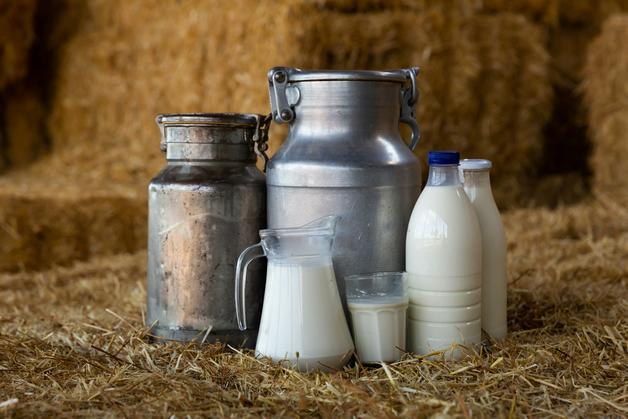When a child displays sudden coughing, erupts in mysterious rashes after a bottle feed, or endures tummy troubles that simply don’t add up—questions flood every attentive parent’s mind. Could Cow’s milk allergy be at play here? Everyday parenting comes with enough surprises, but add unpredictable reactions to milk, and concern can easily escalate. What are these symptoms telling you? How do you decipher them amidst the swirl of meal-times, interrupted sleep, or family expectations? Getting clear answers not only brings peace of mind but also opens the door to real practical solutions for your little one.
Prepare to explore what exactly Cow’s milk allergy involves, how to spot warning signs, why some kids are predisposed, and the steps for management—plus, a peek at the outlook and daily adjustments for families navigating this journey. Along the way, discover scientific, compassionate guidance suited to the realities you face every day.
What Is Cow’s Milk Allergy? A Deeper Insight
Cow’s milk allergy is not just about lactose intolerance. Where lactose intolerance is a simple trouble with digesting milk sugar (lactose) due to a lack of the enzyme lactase, a true Cow’s milk allergy is a fully orchestrated immune response. The body’s defence system mistakes innocent milk proteins like casein and whey (and more specifically, beta-lactoglobulin) as harmful attackers—unleashing a cascade of reactions.
- IgE-mediated Cow’s milk allergy: Fast and fiery—think itchy rashes, hives, swelling (angioedema), vomiting, even sudden wheezing or anaphylaxis—tipping off within minutes to an hour after dairy is consumed.
- Non-IgE-mediated Cow’s milk allergy: Slower but relentless—digestive distress, blood in stools, persistent colic, eczema, constipation, secret trouble brewing hours or even days after the slightest milk trace enters their system.
Sometimes, there’s a mixed pattern: symptoms of both varieties dancing together, confusing caregivers and health professionals alike. Importantly, Cow’s milk allergy tends to debut in infancy or early childhood, affecting up to 2–3% of young children, but for most, this is not a lifelong burden—many outgrow it by age 6.
But why does the body react so strongly? In children with a family history of food or respiratory allergies—such as asthma, eczema, or hay fever—the immune system may be genetically primed for overreaction. Even so, predicting exactly who will develop Cow’s milk allergy remains an area of active research.
Recognising the Telltale Signs and Symptoms
Parents become experts at noticing the smallest shifts in their child’s behaviour or appearance. Yet, Cow’s milk allergy has an ability to disguise itself—presenting with rapid-onset skin symptoms (urticaria, redness, or severe itching) or, alternatively, dragging out subtler complaints (colic, unexplained eczemas, or tummy pain). Watch carefully for:
- Immediately after exposure: Hives (urticaria), swelling around lips or face, sudden wheezing, vomiting, rapid rash spread, occasionally a threat of anaphylaxis (a true emergency requiring immediate medical attention).
- Delayed reactions: Tummy cramps, persistent diarrhoea, constipation, blood-speckled or mucous-filled stools, difficulty feeding, reflux, unease—sometimes chronic eczema that resists routine topical care.
Why such diverse symptoms? It all comes down to the route of the body’s immune response: the fast ones involve IgE antibodies triggering histamine release, while the delayed responses involve other immune cells (like T lymphocytes) and a slower inflammatory process.
Age matters: Infants tend to show gut and skin troubles first, while older children might develop more expressive symptoms—obvious hives, breathing difficulties, or asthmatic wheezing.
Keeping a detailed food and symptom diary—logging what your child eats, how much, and when symptoms rear their head—can be a guiding torch for both parents and doctors.
Diving Into Causes and Predisposing Factors
Ask any parent, and they’ll confirm: the “why” is the hardest question of all. A powerful combination of genetic predisposition (family history of allergies) and environmental factors tips the balance, but no single moment explains everything. For example:
- Early, unguided exposure to cow’s milk proteins may contribute in some instances
- No proven link between a mother’s diet in pregnancy/breastfeeding and the child developing Cow’s milk allergy
- The proteins in milk from goats, buffalo, or sheep can also provoke reactions in sensitive children (cross-reactivity)
- Children exhibiting Cow’s milk allergy are statistically more likely to deal with other allergies (multiple food allergies, eczema, asthma).
Scientific consensus: prevention strategies are evolving, but Cow’s milk allergy isn’t blamed directly on environmental toxins, urbanisation, or hygiene, contrary to popular assumptions.
Diagnosing Cow’s Milk Allergy: A Stepwise Approach
Clarity begins with a careful, methodical approach. Here’s how medical professionals typically proceed:
- Clinical history and symptom diary: The foundation, giving direction to further steps. Thorough notes matter.
- Elimination diet: All sources of cow’s milk protein (including hidden ones—casein, whey, lactoglobulin) are withdrawn from the child’s (or mother’s, if breastfeeding) diet. If symptoms improve, suspicion increases.
- Oral food challenge: Under controlled, medical supervision, cow’s milk protein is reintroduced. Return of symptoms may confirm diagnosis.
- Skin prick tests and serum-specific IgE blood tests: Helpful for diagnosing IgE-mediated forms. Not always conclusive, especially for the delayed (non-IgE) types.
- In rare, complex situations with pure digestive symptoms, sigmoidoscopy or rectal biopsy may be performed.
It’s vital to distinguish Cow’s milk allergy from lactose intolerance: the latter involves only digestive upset, absent the immune fireworks (rashes, swelling).
Managing and Treating Cow’s Milk Allergy
When the diagnosis is clear, daily routines need realignment—but solutions are at hand. Key pillars:
1. Elimination Diet: Absolute Diligence
Avoidance is far from straightforward—hidden milk proteins lurk in surprising foods (processed snacks, breads, even some medicines!). Parents must master reading food labels and assert control over food preparation to avoid cross-contamination.
- For infants: Extensively hydrolyzed formula (eHF) is the first preference—proteins are snipped into fragments, reducing allergenicity.
- If reactions to eHF persist or symptoms are severe: Amino acid-based formulas (AAF) offer full safety.
- Soy-based formulas: Only considered after the age of six months, and only if no soy allergy is present.
For breastfed babies, mothers may be asked to eliminate dairy from their own diet. Both mother and baby may need extra calcium and vitamin D—growth and nutrition must be monitored routinely.
2. Medical Treatment and Emergency Readiness
- Antihistamines soften mild allergy symptoms—itch, rash, mild swelling.
- If past reactions have included wheezing, collapse, or anaphylactic shock: families may be prescribed an epinephrine auto-injector (such as EpiPen), with detailed instructions for use. All caregivers, teachers, and relatives should be briefed in its operation.
- In select cases, a doctor-supervised oral immunotherapy/desensitization may build up tolerance over time, though this remains specialised.
3. Everyday Life: Practical Adjustments, Emotional Support
Each meal, snack, or party introduces layers of new planning:
- Make sure all caretakers (school, daycare, grandparents) are updated and equipped with an anaphylaxis action plan.
- For outings, birthdays, festivals—bringing safe snacks or meals can transform anxiety into freedom.
- Children thrive when included in their own care: empower them early to understand safe choices, spot symptoms, and seek help.
Connecting with other families facing Cow’s milk allergy can ease the sense of overwhelm and share tried-and-tested tips for restaurant meals, travel, or festival food.
Outlook: Long-Term Perspective
The forecast for children with Cow’s milk allergy is broadly optimistic. About 90% will outgrow the allergy by age 6. However:
- Regular retesting (supervised food challenges every 6–12 months) is vital to track changing tolerance.
- Some children first tolerate milk that’s baked into breads or muffins (the heat partially breaks down proteins)—medical guidance is essential for such reintroduction.
- A minority of children may develop other atopic challenges (asthma, eczema), underlining the value of ongoing medical guidance.
Prevention: Current Science and Hopes
What about avoiding Cow’s milk allergy in the first place?
- Exclusive breastfeeding, especially during the first 4–6 months, shows benefit in reducing allergy risk—but only when possible and comfortable for the family.
- There’s no benefit seen in delaying dairy or other allergenic food introduction past 4–6 months; indeed, introducing them too late might elevate risk.
- Maternal dietary restrictions during pregnancy or breastfeeding have shown no protective effect—these may even cause nutritional gaps if not carefully managed.
- Hypoallergenic formulas (eHF, AAF) are a recommended substitute only where breastfeeding isn’t possible; regular cow’s milk or soy are not considered safe alternatives for high-risk infants.
- Probiotics are still being researched for prevention and treatment—routine use is not currently supported by robust evidence.
Key Takeaways
- Cow’s milk allergy is an immune system-driven reaction—distinct from lactose intolerance—unfolding as skin, gut, or respiratory issues, either quickly or over several days.
- Accurate diagnosis relies on medical assessment, food and symptom records, elimination–reintroduction diets, and, where appropriate, allergy testing.
- Managing Cow’s milk allergy means strict removal of all forms of cow’s milk protein, protecting nutrition, readiness for emergencies, and periodic medical review to test if the allergy has resolved.
- Most children will outgrow Cow’s milk allergy before turning six, but until then, family, school, and healthcare partnerships keep your child thriving.
- Emotional reassurance, education, and a supportive circle make a tangible difference in day-to-day life with Cow’s milk allergy.
- Special attention to safe reintroduction (baked milk, for instance) always requires specialist support.
- The evolving science of prevention encourages early inclusion of dairy (at the right time) and discourages unnecessary dietary avoidance during pregnancy or breastfeeding.
- For ongoing guidance and a community of support, parents can download the application Heloa for tailored advice and free children’s health questionnaires.
Questions Parents Ask
Can cow’s milk allergy cause sleep problems in babies?
Absolutely. Digestive discomfort, night-time colic, or persistent itching from eczema—these are frequent bedfellows of Cow’s milk allergy, often leading to unsettled sleep. If your baby is restless despite soothing efforts or wakes frequently after feeds, it’s worth discussing with your paediatrician if Cow’s milk allergy might be involved. Medical guidance can offer both relief for your child and more peaceful nights for you.
What are safe milk alternatives for children with cow’s milk allergy?
For the youngest, hypoallergenic formulas like extensively hydrolysed or amino acid-based formulas are favoured. For older children, calcium-fortified drinks from plants—such as oat, rice, or selected soya milks—can provide nutritional cover, but always check that these meet the dietary needs of growing bodies. Consulting a paediatrician or registered dietitian ensures your child gets the right balance.
How can I make sure my child gets enough calcium without cow’s milk?
Plenty of options exist—leafy greens (like spinach), tofu made with calcium, sesame seeds, legumes, and fortified non-dairy beverages all contribute valuable calcium. Sometimes a supplement makes sense if dietary intake isn’t quite enough, especially during growth spurts. Your healthcare provider can suggest the best choices and monitor progress, ensuring that bones and teeth develop strong, even in the absence of dairy.
Further reading:









